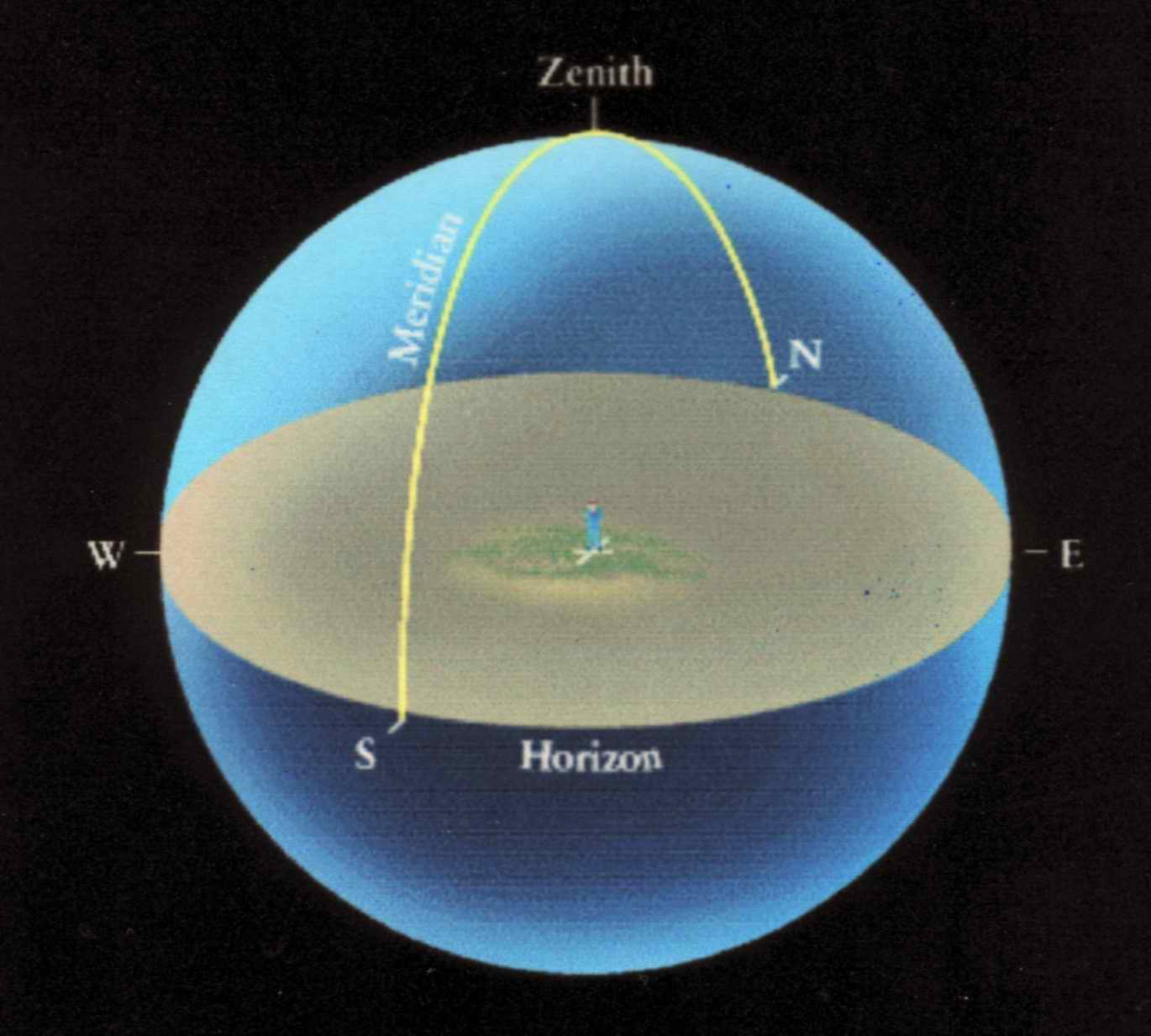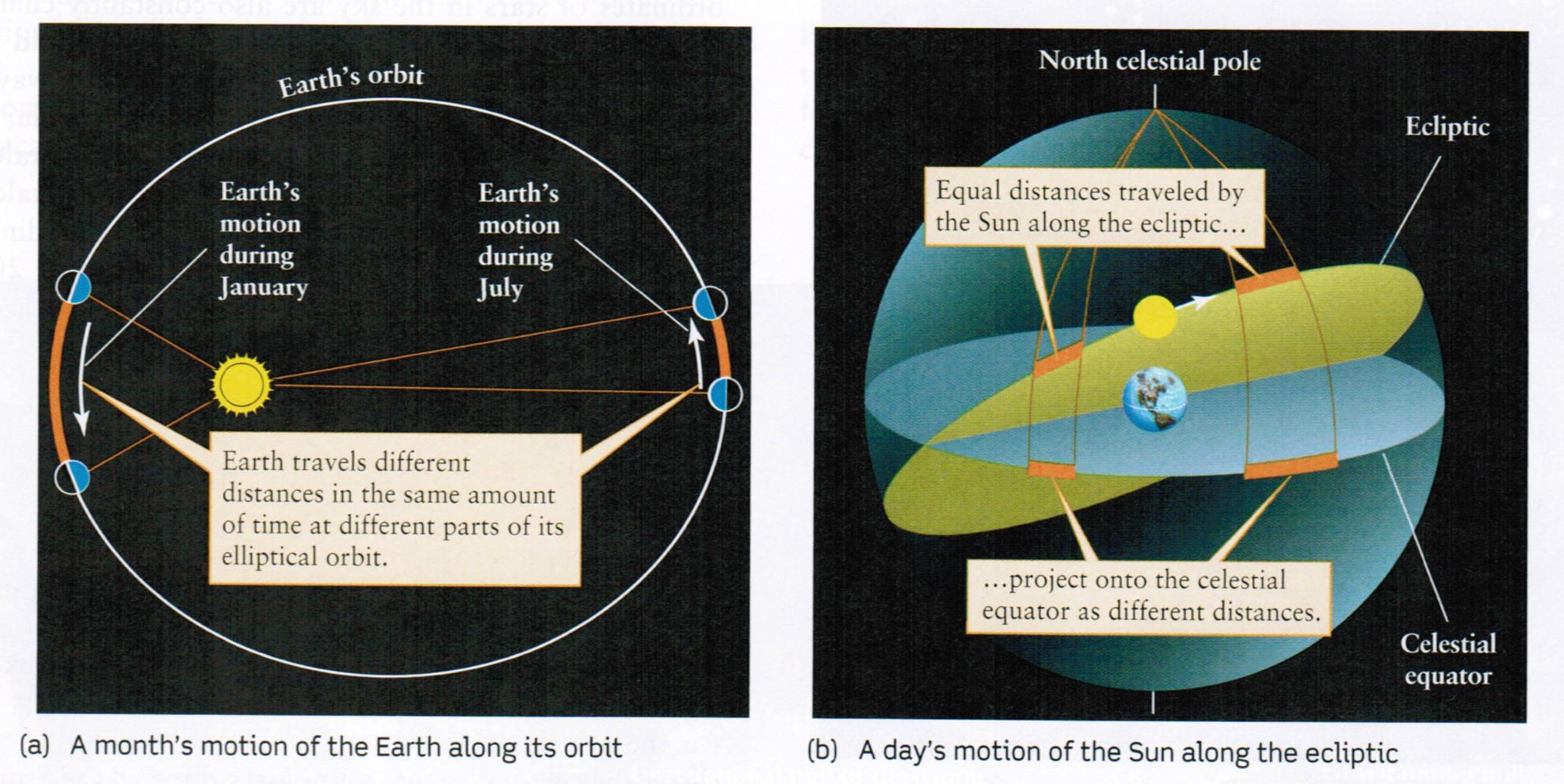Ch 02-03 Time
- Time
- Meridian; meridian transit

- Apparent solar day (Why is it different every day?)

- Mean solar day (Defined to be 24 hours)
- UTC (Coordinated Universal Time)
= GMT (Greenwich Mean Time)
- Sidereal time
A sidereal day = 23h56m4s.091
(This is the Earth's rotation period!)
The R.A. of an object at meridian transit is the local sidereal time.
- Calendar
- Sidereal year : the Sun returning to the same position in the
background stars
365.2564 day
(365d6h9m13s)
Tropical year : the Sun returning to the same equinox
365.2422 day
(365d5h48m46s)
(Note that the Sun moves eastwards and the equinox moves westwards,
so the tropical year is shorter than the sideral year.)
- A calendar year is 365 days, but a tropical year is about one quarter day longer.
In 46 BC, the Julian calendar was established, which has a leap year every 4 years.
- The tropical year is not exactly 365.25 days. In fact,
365d.25 - 365d.2422 = 11m14s,
i.e., a difference of about 3 days per 400 years.
In 1582, the Sun was at the vernal equinox on 3/11.
Pope Greyory XIII :
1) Leap every 4 yrs, but not at every 100 yrs, and still leap at every 400 yrs
2) In 1582, 10/4 followed by 10/15
We now use this Gregorian system, which has 1 day error per 3300 years.
- Julian Date
- The Julian Date (JD) is referred to the noon at Greenwich on Jan. 1, 4713 B.C. (Julian calendar),
which is Nov. 24, 4714 B.C. in Gregorian calendar.
e.g. UTC 12:00, Jan. 1, 2000 AD
= JD 2451545.0
- The Modified Julian Date (MJD)
MJD = JD-2400000.5
e.g. UTC 18:00, Sep. 9, 2024 AD
= JD 2460563.25
= MJD 60562.75